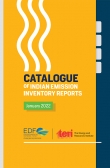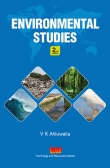PLG_DEBUG_TITLE
session.counter ⇒ 1
session.timer.start ⇒ 1766767475
session.timer.last ⇒ 1766767475
session.timer.now ⇒ 1766767475
session.client.browser ⇒ Mozilla/5.0 AppleWebKit/537.36 (KHTML, like Gecko; compatible; ClaudeBot/1.0; +claudebot@anthropic.com)
registry ⇒ {}
id ⇒ 0
name ⇒
username ⇒
email ⇒
password ⇒
password_clear ⇒
usertype ⇒
block ⇒
sendEmail ⇒ 0
registerDate ⇒
lastvisitDate ⇒
activation ⇒
params ⇒
groups ⇒
guest ⇒ 1
lastResetTime ⇒
resetCount ⇒
aid ⇒ 0
1.92 MB (2,015,168 Bytes)
PLG_DEBUG_QUERIES_LOGGED
SELECT `data`
FROM `joomla_session`
WHERE `session_id` = 'oa0i2mpt7356la65ffouco3kbg'DELETE
FROM `joomla_session`
WHERE `time` < '1766765675'SELECT `session_id`
FROM `joomla_session`
WHERE `session_id` = 'oa0i2mpt7356la65ffouco3kbg'
LIMIT 0, 1INSERT INTO `joomla_session`
(`session_id`, `client_id`, `time`)
VALUES
('oa0i2mpt7356la65ffouco3kbg', 0, '1766767475')SELECT extension_id AS id, element AS "option", params, enabled
FROM joomla_extensions
WHERE `type` = 'component'
AND `element` = 'com_users'SELECT b.id
FROM joomla_usergroups AS a
LEFT JOIN joomla_usergroups AS b
ON b.lft <= a.lft
AND b.rgt >= a.rgt
WHERE a.id = 1SELECT id, rules
FROM `joomla_viewlevels`SELECT folder AS type, element AS name, params
FROM joomla_extensions
WHERE enabled >= 1
AND type ='plugin'
AND state >= 0
AND access IN (1,1)
ORDER BY orderingSELECT extension_id AS id, element AS "option", params, enabled
FROM joomla_extensions
WHERE `type` = 'component'
AND `element` = 'com_languages'SELECT m.id, m.menutype, m.title, m.alias, m.note, m.path AS route, m.link, m.type, m.level, m.language,m.browserNav, m.access, m.params, m.home, m.img, m.template_style_id, m.component_id, m.parent_id,e.element as component
FROM joomla_menu AS m
LEFT JOIN joomla_extensions AS e
ON m.component_id = e.extension_id
WHERE m.published = 1
AND m.parent_id > 0
AND m.client_id = 0
ORDER BY m.lftSELECT extension_id AS id, element AS "option", params, enabled
FROM joomla_extensions
WHERE `type` = 'component'
AND `element` = 'com_product'SELECT *
FROM joomla_languages
WHERE published=1
ORDER BY ordering ASCSELECT id, home, template, s.params
FROM joomla_template_styles as s
LEFT JOIN joomla_extensions as e
ON e.element=s.template
AND e.type='template'
AND e.client_id=s.client_id
WHERE s.client_id = 0
AND e.enabled = 1select *
from material_master
where category_id=1
and new_release>0
and web_display=1
order by new_release desc
limit 0,4select *
from material_master
where category_id=1
and best_seller>0
and web_display=1
/*
AND material_id in (select virtuemart_product_id
from joomla_virtuemart_products)*/
order by best_seller, year_publication desc
limit 0,4select *
from material_master
where category_id=1
and forthcoming>0
and web_display=1
/*
AND material_id in (select virtuemart_product_id
from joomla_virtuemart_products)*/
order by forthcoming desc
limit 0,4SELECT *
FROM material_master
where category_id=5
and web_display=1
and new_release>0
order by new_release DESC,material_id desc,level desc, category_id, year_publication desc
limit 0,4select material_master.*,highlight_master.highlight_description
from material_master
left join highlight_master
on material_master.material_id = highlight_master.material_id
where web_display ='1'
and (isbn like '874')select *
from author_editor
where material_id=874select a.*,b.package_id as packageid,(select title
from material_master
where material_id = b.package_id) as packetitle,
(select c_price_rupee
from material_master
where material_id = b.package_id) as pc_price_rupee,
(select c_price_dollar
from material_master
where material_id = b.package_id) as pc_price_dollar,
(select s_price_rupee
from material_master
where material_id = b.package_id) as ps_price_rupee,
(select s_price_dollar
from material_master
where material_id = b.package_id) as ps_price_dollar
from material_master as a
inner join
(
select material_id,package_id
from pack_materials
where package_id IN (
select package_id
from pack_materials
where material_id='874'
)
order by package_id
) as b
on a.material_id= b.material_id
order by a.package_id,year_publication descselect sector_id,category_id,relateditem
from material_master
where material_id='874'select *
from material_master
where sector_id in('7','25','3','7,25,3')
AND category_id in('1','1')
AND material_id NOT IN (874)
AND web_display='1'
AND stock=1
AND forthcoming=0
order by material_id DESC
limit 0,4SELECT forthcoming
FROM material_master
where material_id=874SELECT *
FROM review
where (material_id=874
and special>0)SELECT m.id, m.title, m.module, m.position, m.content, m.showtitle, m.params, mm.menuid
FROM joomla_modules AS m
LEFT JOIN joomla_modules_menu AS mm
ON mm.moduleid = m.id
LEFT JOIN joomla_extensions AS e
ON e.element = m.module
AND e.client_id = m.client_id
WHERE m.published = 1
AND e.enabled = 1
AND (m.publish_up = '0000-00-00 00:00:00' OR m.publish_up <= '2025-12-26 16:44:35')
AND (m.publish_down = '0000-00-00 00:00:00' OR m.publish_down >= '2025-12-26 16:44:35')
AND m.access IN (1,1)
AND m.client_id = 0
AND (mm.menuid = 0 OR mm.menuid <= 0)
ORDER BY m.position, m.orderingSELECT distinct sector_id
FROM material_master
WHERE (sector_id >0)SELECT distinct sector_id
FROM material_master
WHERE (sector_id >0)select a.*
from sector_master as a
where a.sector_id in (6,21,7,25,25,7,14,25,10,61,63,1,11,16,18,44,36,35,1,3,7,9,10,25,25,61,6,14,7,63,6,21,17,13,19,11,7,5,9,18,7,23,1,10,3,5,8,11,6,5,13,14,17,19,21,25,63,3,5,11,7,44,26,6,26,3,19,21,63,16,18,44,6,29,6,8,6,7,1,3,4,5,8,9,10,13,12,14,17,19,20,21,24,27,29,34,35,36,19,27,19,27,19,21,7,14,25,5,25,7,3,8,9,10,7,25,3,1,7,8,9,10,11,59,23,26,25,63,16,18,6,7,17,19,21,24,27,2,4,5,18,11,7,18,1,21,7,36,59,7,9,23,11,60,2,3,5,6,23,21,29,9,19,7,59,7,8,9,19,34,4,6,9,21,29,4,6,9,21,29,11,5,15,3,2,4,6,19,21,29,4,6,6,26,25,14,3,25,5,25,29,4,6,21,1,2,7,63
,7,6,21,19,7, 9, 60,21,1,2,3,4,5,6,7,13,14,19,23,24,25,29,33,34,35,36,6,19,8,10,19,6,14,6,7,25,25,26,6,14,7,6,2,4,6,12,13,21,24,5,7,7,3,10,25,3,7,7,25,6,7,21,6,7,25,3,2,4,6,7,8,10,9,13,14,17,19,21,24,25,35,9,1,7,23,25,34,21,25,6,19,21,7,11,25,7,6,21,5,6,9,11,25,29,34,9,1,7,23,25,9,10,7,8,7,19,21,7,19,6,21,25,14,7,6,21,19
,21,24,2,7,21,7,5,9,25,11,7,44,9,11,25,44,4,6,4,6,18,21,7,35,7,10,7,59,2,6,14,18,21,7,3
,19,27,11,7,9,3,6,7,21,6,5,9,25,7,3,1,8,5,6,9,11,25,29,7,10,19,6,2, 7, 6, 8, 21, 25,12,25,24,7,8,35,36,21,71,6,71,13,21,24,12,5,23,63,1,6,23,11,25,7,26,24,29,34,21,36,44,63,35,25,59,7,43,7,36,2,6,14,11,3,44,6,14,34,8,29,19,6,7,25,1,6,14,5,23,25,11,25,23,44,9,7,1,9,1,7,23,25,34,7,8,9,12,7,8,9,36,23,1,5,7,11,44,7, 8,17,6,3,7,10,1,36,34,25,36,15,29,5,7,23,25,7,21,25,34,36,5,7,9,25,35,36,35,6, 21, 24,1,7,9,23,25,44,59,1,3,6,7,19,21,23,25,33,26,35,36,42,14,25,35,36,3,7,9,23,10, 7,25,7,59,6,7,1,3,4,5,8,9,10,13,12,14,17,19,20,21,24,27,29,34,35,36,6,7,6,14,5,4,1,17,66,7,68,3,7,25,18,7,8,10,7,1,11,16,18,44,63,2,6,7,12,13,14,17,19,21,23,24,34,6,7,8,9,10,21,23,25,36,67,68,70,1,18,1,2,5,6,8,9,10,12,13,14,17,59,7,9,11,23,25,26,7,63,7,24,19,6,7,6,63,18,35, 7,10,9,25,5,25,63,34,23,18,16,44,3, 7, 8, 35,3,7,25,26,59,1,3,6,7,19,21,23,25,33,26,35,36,42,6,7,25,21,7,9,59,9,11,25,63,3,5,11,7,44,35,8,7,29,33,7,13,7, 25,26,59,7,14,6,19,14,5,12,13,17,7,15,34,69,1,7,10,25,23,4,6,19,29,21,3,7,9,10,23,25,26,34,25,26,5,7,9,23,7,63,11,69,2,4,5,6,7,8,9,10,12,13,17,19,21,23,24,25,35,36,2,4,5,6,7,8,9,10,12,13,17,19,21,23,24,25,35,36,25, 36,7,36,3,1,7,8,9,10,21,23,25,26,34,5,7,14,25,36,7,8,9,10,6,2,4,12,21,24,35,7,6,21,19,6,7)
order by a.subject_desc ascselect a.*
from sector_master as a
where a.sector_id in (6,21,7,25,25,7,14,25,10,61,63,1,11,16,18,44,36,35,1,3,7,9,10,25,25,61,6,14,7,63,6,21,17,13,19,11,7,5,9,18,7,23,1,10,3,5,8,11,6,5,13,14,17,19,21,25,63,3,5,11,7,44,26,6,26,3,19,21,63,16,18,44,6,29,6,8,6,7,1,3,4,5,8,9,10,13,12,14,17,19,20,21,24,27,29,34,35,36,19,27,19,27,19,21,7,14,25,5,25,7,3,8,9,10,7,25,3,1,7,8,9,10,11,59,23,26,25,63,16,18,6,7,17,19,21,24,27,2,4,5,18,11,7,18,1,21,7,36,59,7,9,23,11,60,2,3,5,6,23,21,29,9,19,7,59,7,8,9,19,34,4,6,9,21,29,4,6,9,21,29,11,5,15,3,2,4,6,19,21,29,4,6,6,26,25,14,3,25,5,25,29,4,6,21,1,2,7,63
,7,6,21,19,7, 9, 60,21,1,2,3,4,5,6,7,13,14,19,23,24,25,29,33,34,35,36,6,19,8,10,19,6,14,6,7,25,25,26,6,14,7,6,2,4,6,12,13,21,24,5,7,7,3,10,25,3,7,7,25,6,7,21,6,7,25,3,2,4,6,7,8,10,9,13,14,17,19,21,24,25,35,9,1,7,23,25,34,21,25,6,19,21,7,11,25,7,6,21,5,6,9,11,25,29,34,9,1,7,23,25,9,10,7,8,7,19,21,7,19,6,21,25,14,7,6,21,19
,21,24,2,7,21,7,5,9,25,11,7,44,9,11,25,44,4,6,4,6,18,21,7,35,7,10,7,59,2,6,14,18,21,7,3
,19,27,11,7,9,3,6,7,21,6,5,9,25,7,3,1,8,5,6,9,11,25,29,7,10,19,6,2, 7, 6, 8, 21, 25,12,25,24,7,8,35,36,21,71,6,71,13,21,24,12,5,23,63,1,6,23,11,25,7,26,24,29,34,21,36,44,63,35,25,59,7,43,7,36,2,6,14,11,3,44,6,14,34,8,29,19,6,7,25,1,6,14,5,23,25,11,25,23,44,9,7,1,9,1,7,23,25,34,7,8,9,12,7,8,9,36,23,1,5,7,11,44,7, 8,17,6,3,7,10,1,36,34,25,36,15,29,5,7,23,25,7,21,25,34,36,5,7,9,25,35,36,35,6, 21, 24,1,7,9,23,25,44,59,1,3,6,7,19,21,23,25,33,26,35,36,42,14,25,35,36,3,7,9,23,10, 7,25,7,59,6,7,1,3,4,5,8,9,10,13,12,14,17,19,20,21,24,27,29,34,35,36,6,7,6,14,5,4,1,17,66,7,68,3,7,25,18,7,8,10,7,1,11,16,18,44,63,2,6,7,12,13,14,17,19,21,23,24,34,6,7,8,9,10,21,23,25,36,67,68,70,1,18,1,2,5,6,8,9,10,12,13,14,17,59,7,9,11,23,25,26,7,63,7,24,19,6,7,6,63,18,35, 7,10,9,25,5,25,63,34,23,18,16,44,3, 7, 8, 35,3,7,25,26,59,1,3,6,7,19,21,23,25,33,26,35,36,42,6,7,25,21,7,9,59,9,11,25,63,3,5,11,7,44,35,8,7,29,33,7,13,7, 25,26,59,7,14,6,19,14,5,12,13,17,7,15,34,69,1,7,10,25,23,4,6,19,29,21,3,7,9,10,23,25,26,34,25,26,5,7,9,23,7,63,11,69,2,4,5,6,7,8,9,10,12,13,17,19,21,23,24,25,35,36,2,4,5,6,7,8,9,10,12,13,17,19,21,23,24,25,35,36,25, 36,7,36,3,1,7,8,9,10,21,23,25,26,34,5,7,14,25,36,7,8,9,10,6,2,4,12,21,24,35,7,6,21,19,6,7)
order by a.subject_desc ascselect *
from shopping
inner join material_master
on shopping.material_id = material_master.material_id
where shopping.session = ''
and shopping.order_status=0
order by material_master.titleselect *
from shopping
inner join material_master
on shopping.material_id = material_master.material_id
where shopping.session = ''
and shopping.order_status=0
order by material_master.titleUPDATE `joomla_session`
SET `data` = '__default|a:7:{s:15:\"session.counter\";i:1;s:19:\"session.timer.start\";i:1766767475;s:18:\"session.timer.last\";i:1766767475;s:17:\"session.timer.now\";i:1766767475;s:22:\"session.client.browser\";s:103:\"Mozilla/5.0 AppleWebKit/537.36 (KHTML, like Gecko; compatible; ClaudeBot/1.0; +claudebot@anthropic.com)\";s:8:\"registry\";O:9:\"JRegistry\":1:{s:7:\"\0*\0data\";O:8:\"stdClass\":0:{}}s:4:\"user\";O:5:\"JUser\":25:{s:10:\"\0*\0_errors\";a:0:{}s:9:\"\0*\0isRoot\";N;s:2:\"id\";i:0;s:4:\"name\";N;s:8:\"username\";N;s:5:\"email\";N;s:8:\"password\";N;s:14:\"password_clear\";s:0:\"\";s:8:\"usertype\";N;s:5:\"block\";N;s:9:\"sendEmail\";i:0;s:12:\"registerDate\";N;s:13:\"lastvisitDate\";N;s:10:\"activation\";N;s:6:\"params\";N;s:6:\"groups\";a:0:{}s:5:\"guest\";i:1;s:13:\"lastResetTime\";N;s:10:\"resetCount\";N;s:10:\"\0*\0_params\";O:9:\"JRegistry\":1:{s:7:\"\0*\0data\";O:8:\"stdClass\":0:{}}s:14:\"\0*\0_authGroups\";N;s:14:\"\0*\0_authLevels\";a:2:{i:0;i:1;i:1;i:1;}s:15:\"\0*\0_authActions\";N;s:12:\"\0*\0_errorMsg\";N;s:3:\"aid\";i:0;}}'
, `time` = '1766767476'
WHERE `session_id` = 'oa0i2mpt7356la65ffouco3kbg'
PLG_DEBUG_QUERY_TYPES_LOGGED
PLG_DEBUG_SELECT_QUERIES
PLG_DEBUG_QUERY_TYPE_AND_OCCURRENCESPLG_DEBUG_QUERY_TYPE_AND_OCCURRENCESPLG_DEBUG_QUERY_TYPE_AND_OCCURRENCESPLG_DEBUG_QUERY_TYPE_AND_OCCURRENCESPLG_DEBUG_QUERY_TYPE_AND_OCCURRENCESPLG_DEBUG_QUERY_TYPE_AND_OCCURRENCESPLG_DEBUG_QUERY_TYPE_AND_OCCURRENCESPLG_DEBUG_QUERY_TYPE_AND_OCCURRENCESPLG_DEBUG_QUERY_TYPE_AND_OCCURRENCESPLG_DEBUG_QUERY_TYPE_AND_OCCURRENCESPLG_DEBUG_QUERY_TYPE_AND_OCCURRENCESPLG_DEBUG_QUERY_TYPE_AND_OCCURRENCESPLG_DEBUG_QUERY_TYPE_AND_OCCURRENCESPLG_DEBUG_QUERY_TYPE_AND_OCCURRENCESPLG_DEBUG_QUERY_TYPE_AND_OCCURRENCESPLG_DEBUG_QUERY_TYPE_AND_OCCURRENCESPLG_DEBUG_QUERY_TYPE_AND_OCCURRENCESPLG_DEBUG_QUERY_TYPE_AND_OCCURRENCESPLG_DEBUG_QUERY_TYPE_AND_OCCURRENCESPLG_DEBUG_QUERY_TYPE_AND_OCCURRENCESPLG_DEBUG_QUERY_TYPE_AND_OCCURRENCES
PLG_DEBUG_OTHER_QUERIES
PLG_DEBUG_QUERY_TYPE_AND_OCCURRENCESPLG_DEBUG_QUERY_TYPE_AND_OCCURRENCESPLG_DEBUG_QUERY_TYPE_AND_OCCURRENCES
 Catalogue of Indian Emission Inventory Reports
Catalogue of Indian Emission Inventory Reports
 Water Resources Division: Facilitating 'Water for All'
Water Resources Division: Facilitating 'Water for All'
 Environmental Studies (Second Edition)
Regular Price 325.00
Special Price 293.00
Environmental Studies (Second Edition)
Regular Price 325.00
Special Price 293.00
 The Land of the Setting Sun & Other Nature Tales
Regular Price 250.00
Special Price 225.00
The Land of the Setting Sun & Other Nature Tales
Regular Price 250.00
Special Price 225.00

